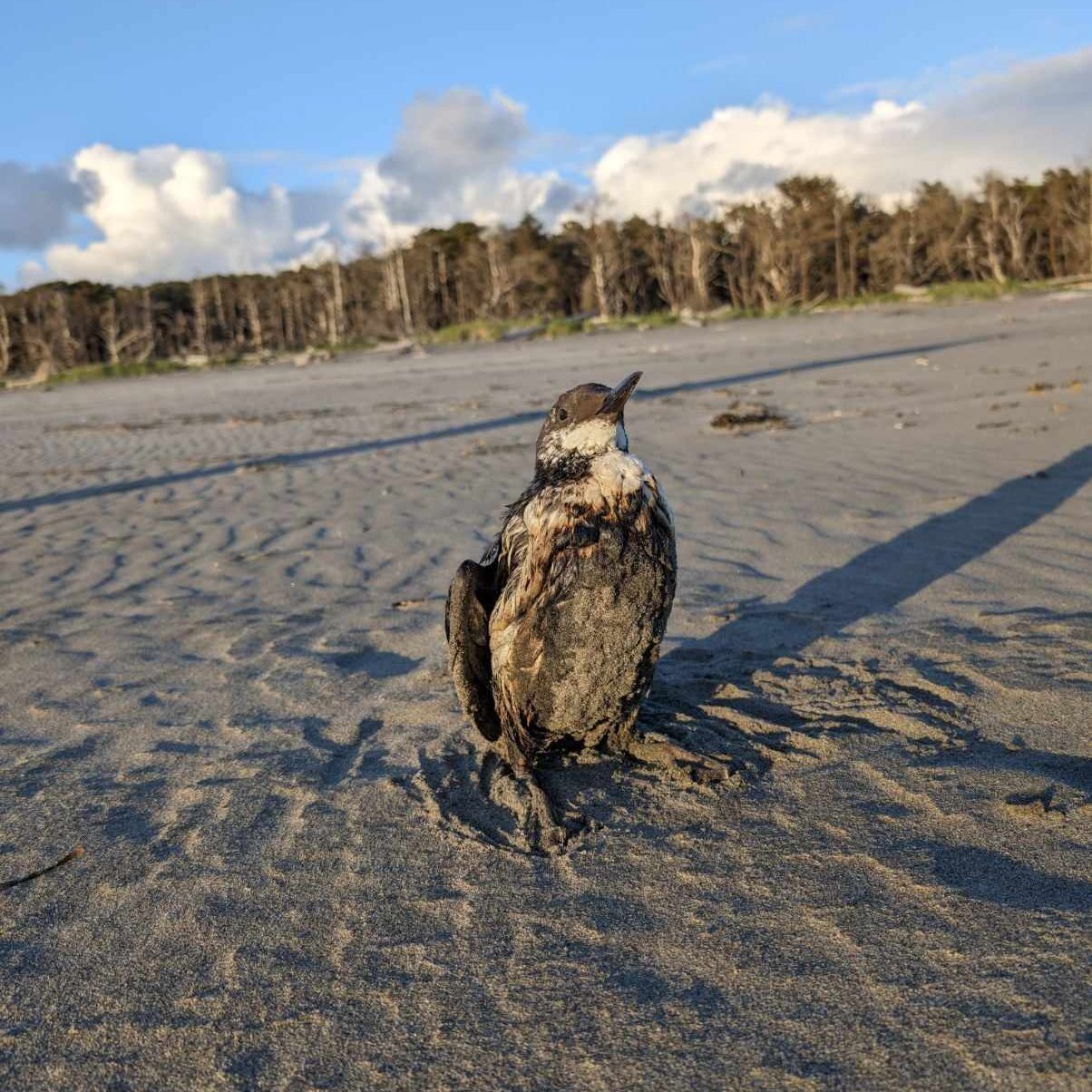
On May 20th COASST partners at the US Fish and Wildlife Service reached out with news of oiled birds on the beach!! A total of seven Common Murres had been delivered to wildlife care facilities over the weekend, collected from beaches across northern Oregon and southern Washington.
State and federal agencies leaped into action, and the US Coast Guard began flying along the coastline between Long Beach, WA and Nehalam, OR to locate an oil source. No oil was observed from the air, and the source of this oil spill is unknown (as of June 2024).
However, when the Washington Department of Ecology’s oil spill response team searched the beaches on foot, fresh tarballs were discovered in the wrack line, not far from where one of the oiled murres was discovered. There was definitely some kind of spill in the water.

During the next few weeks, three more murres were delivered to wildlife rehabilitation centers, and one tagged Black-footed Albatross was reported stranded on an Oregon beach near the reported oil.
At COASST we’ve designed our beach survey protocols to capture the impacts of a massive oil spill. Our monthly surveyors report the presence or absence of oil on their beaches AND on any beached birds that they encounter. We’ve even assessed our existing dataset, to determine which species are most at risk when oil spills. (You can read about that research here!)
We know that we could detect the impacts of a major oil spill, with thousands of casualties. But what can we say about a smaller event like this one? Without a heads-up from partners, would COASST have detected it?
Here’s what we saw in the COASST dataset:
In Northern Oregon and Southern Washington, COASSTers conducted almost 100 surveys throughout April (47 surveys) and May (51 surveys). Although 40 of those surveys (19 in April and 21 in May) had at least one beached bird, none of 73 carcasses found were oiled.
There was one beach within those regions (Schooner South, OR) where COASSTers reported 1-5cm tarballs. Typical of recent deposition, these tarballs (lower photo, left) were soft and flattened, with most occurring in the wrack line. Occurrance was patchy, with some sections containing tarballs every meter.


A few COASST surveyors also sent photographs featuring suspicious streaks of brown on light-colored sandy beaches (upper photo, right). While it’s possible for oil to appear in similar streaks on the beach, these brown streaks – lacking in both a petroleum smell and/or a rainbow sheen on the water nearby – were more likely composed of diatoms (aka phytoplankton, the smallest plants at the bottom of the oceanic food web). Brown foam and streaked beaches are common in the spring when conditions are right for algae to bloom and wash ashore en masse.
So, did COASST detect this oil spill?
While we didn’t see any oiled birds, our surveyors did report suspected tarballs within the impacted section of coastline. When we compare the reports from this year to previous years, it’s obvious that this stretch of coastline – highly influenced by the Columbia River – is one of the most likely spots for our COASSTers to report oiled birds (more than half of our 142 oiled bird count to date).
